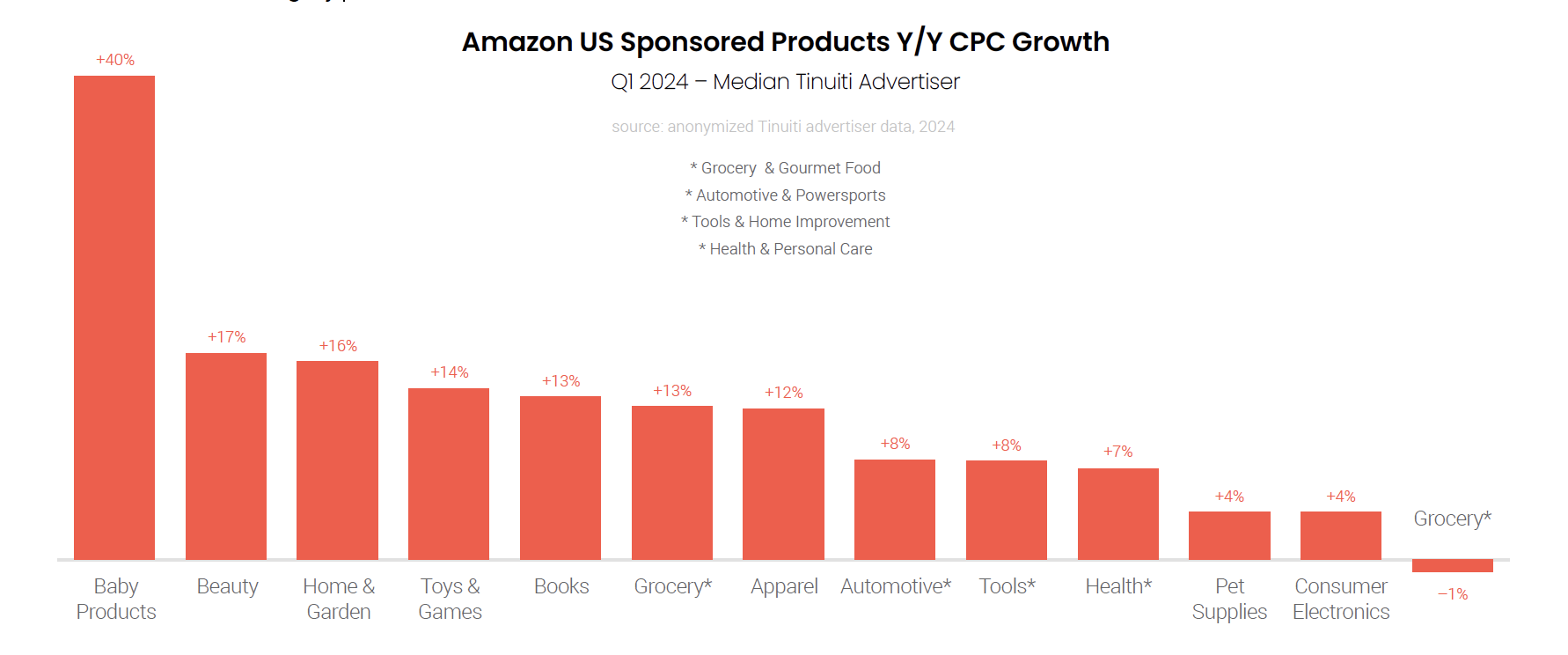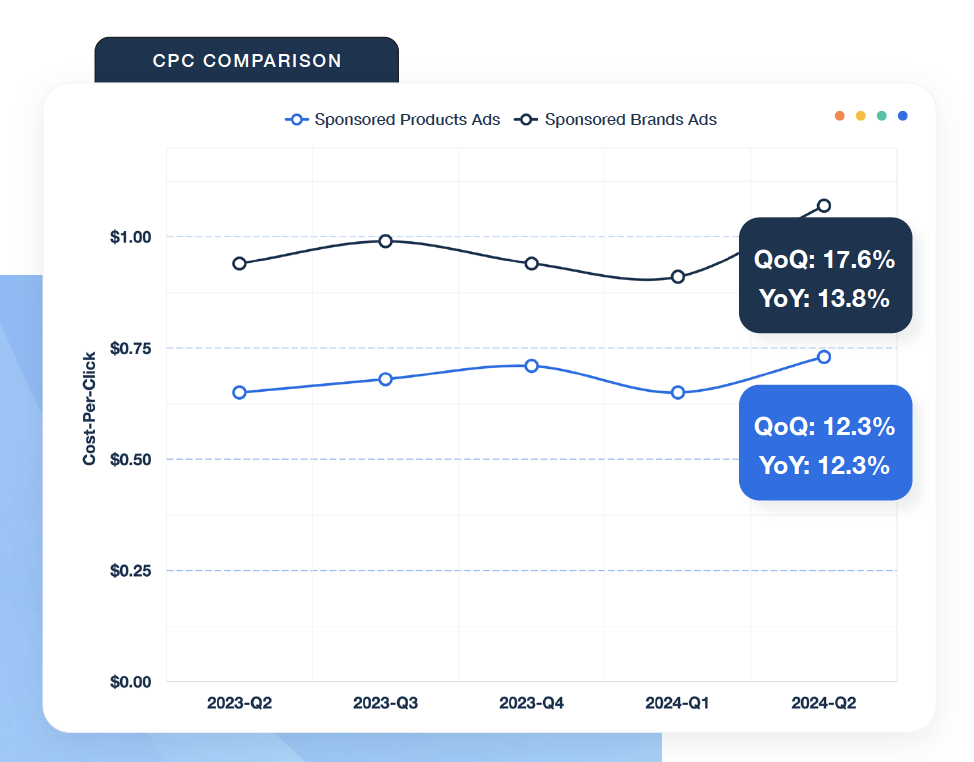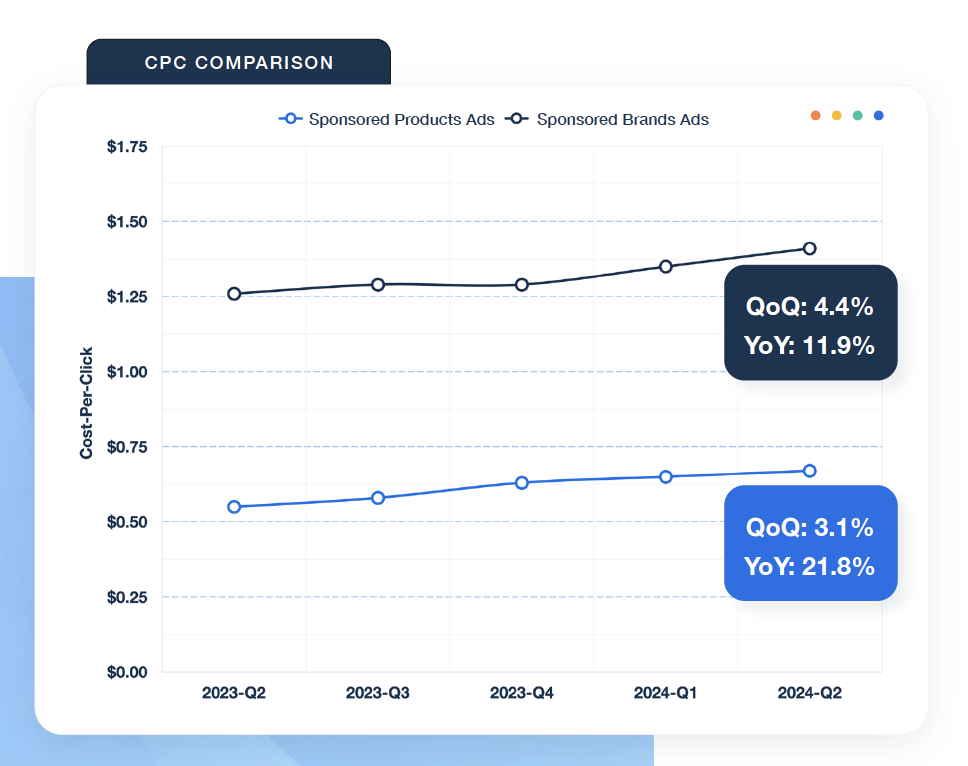Is $0.7 a good CPC?

A few weeks ago, we published a post about what is a good ACOS/ROAS.
ACOS, as we all know is the ratio between the ad spend and the sales that the advertiser generates from the ads. The Ad spend is the CPC they paid multiplied by the number of clicks they got. In this post we will focus on the CPC. We’re posting this now, because last week Pacvue released their 2024 Q2 Retail Media Benchmark Report, which presents some interesting insights on the CPC trends in the market.
Just like the ROAS or ACOS that your advertisers are getting in your store, the CPC should be reasonable and make sense – It should get them a good enough ACOS which is lower than their margin, otherwise they will not advertise, and it should also relate and be competitive to the alternative networks and mostly to Amazon (if that’s the main competitor in the region) and Google shopping ads.
If the CPCs in the market are going up, then there is no reason it shouldn’t go up in your marketplace too.
So what has happened with Amazon CPC’s recently?
In the US, the average cost-per-click (CPC) increased 11.4% for Sponsored Brands and 6.3% for Sponsored Products quarter-over-quarter. The increased CPC costs were also seen year-over-year, with Sponsored Brands up 10% and Sponsored Products up 3%.
“However, the increased CPCs are likely due to increased competition, especially for Sponsored Brands ads, as brands invest more in the ad type and new placements open up.”
CPC is very much dependent on the product category and differs between the store categories and the report shows that in the US the category with the largest increase was Patio, Lawn, & Garden which had a 35.7% increase in CPC.
In Europe, Amazon’s CPC continues to increase at a faster rate than the US marketplace, with Sponsored Brands increasing 17.6% and Sponsored Products increasing 12.3% in Q2.
The Average CPC for Sponsored Product Ads in Europe is almost $0.75 and for Sponsored Brand Ads its more than $1.

In the report they also look at Walmart.
In Walmart, the competition continued to increase, with Sponsored Products CPC increasing 3.1% quarter-over-quarter and a whopping 21.8% year-over-year. Similarly, Sponsored Brands increased 4.4% quarter-over-quarter and 11.9% year-over-year.
“With increasing CPCs, ROAS often takes a hit, and this quarter was no exception. Sponsored Brands ROAS decreased –4.3% quarter-over-quarter but increased 7.1% year-over-year, showing that despite costs continuing to rise, ROAS can also increase. Sponsored Products ROAS were nearly flat, only increasing 1.2% quarter-over-quarter and decreased –5% year-over-year”

What about Google shopping?
A few months ago, Tinuity released their Q1 digital ads benchmark report which showed that the CPC of the Google shopping ads increase the most.
“Advertiser investment in Google shopping ads, including both Performance Max and standard Shopping campaigns, rose 21% Y/Y in Q1, up from 19% growth in Q4. That acceleration came despite click growth slowing from 13% in Q4 to 6% in Q1. While CPC growth has strengthened across all Google search ads in the past year, it has picked up the most steam on the shopping side. Shopping CPCs had fallen 3% Y/Y in Q1 2023, but growth has now reached 13% Y/Y in Q1 2024.”
The reason for the increase is that Amazon is being more aggressive with its advertising to fight Temu and other retailers who are also increasing their ad spend and the growing competition increases the CPCs.
Tinuity also reports that the CPC of Amazon’s Sponsored Product Ads increased by 11% (Q1toQ1) and that Sponsored Products maintain dominant share of Amazon Ad Console spend with 82% of the total ad spend (in Q1 2024). 15% attributed to Sponsored Brands and 3% going to Sponsored Display.
It also shows that the median advertiser in almost all of the product categories saw a CPC growth in the first quarter of 2024, with double-digit increases for more than half of these product categories. Baby products saw the biggest CPC increase at 40% year over year.

As for Walmart, Tinuity also finds that advertisers ramped up investment in Sponsored Products by 35% year over year in Q1 2024, with clicks up 3% and CPC up 31% for the quarter.
Let’s get back to your store
These benchmarks are important for any marketplace or retailer that offers Sponsored Product Ads or other ad types.
Advertisers are not interested in working with too many advertising channels. They can’t really work with all of the retailers and all of the publishers, especially if these channels have separate ad networks and tools. They will select the most effective e-commerce websites in their territory and spend their retail media ad budget there.
To be on that list you need to have good traffic and good shoppers, deliver good performance to the advertisers and offer a competitive CPC.
So, if advertisers and sellers are paying $0.75 per click on average on Amazon in Germany or France for example, and assuming that you have the traffic and good performance and conversions, then your CPC should be in the same general area. Not much higher but also not much lower.
You should also look at the trend of your CPC over time. If you maintain a good competition between your sellers and advertisers and your GMV, traffic and conversions are stable, then the trend should be the same as in Amazon and Google shopping. As the demand for retail media grows it means higher CPCs for the advertisers.
That’s the basic rule of economics and it also works in retail media.
So if someone asks you if $0.7 is a good CPC, ask how much they are paying for their product ads in Amazon or Google shopping before you answer.
About Mabaya
Mabaya, a Criteo company, offers a white-label self-service retail media platform for online retailers and marketplaces that enables sellers and brands to bid in order to ensure their products are listed in premium locations in the online store.
The platform is integrated in more than 50 ecommerce sites around the globe (such as Bol.com, Jumia, Manomano, Kaufland, Falabella etc.), serving more than 80,000 advertisers and sellers.

